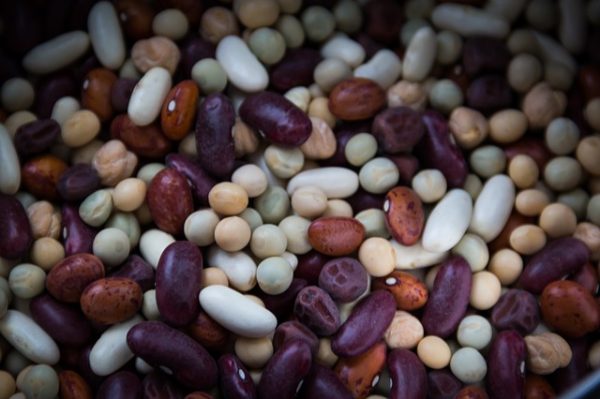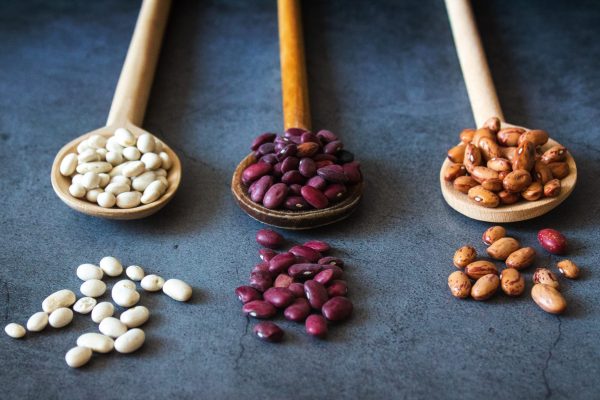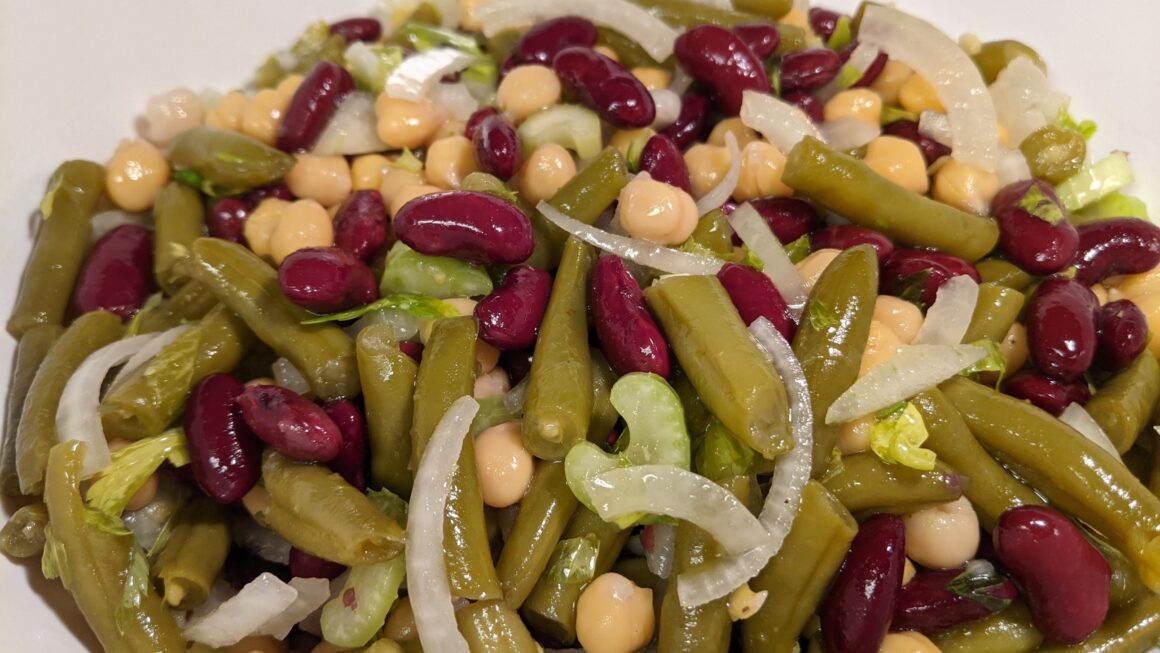This post may contain affiliate links, please see my disclosure policy to learn more.
In my “Beans and Rice, Rice and Beans” blog post, I list several items that are great to have in your food storage, with dried beans being one of the top items. They are economical and can be stored for a long time. According to the United States Agency for International Development, Beans “if stored properly in a cool, dry place, dried beans have a minimum shelf life of one year, keeping indefinitely and withstanding harsh or tropical environments.” Instructions have been provided below on how to cook dried beans on the stovetop, slow cooker, and in an Instant Pot.
| Dried Bean Guide | |
| Use this guide to gauge how much-dried beans to cook. | |
| 1/3 cup dried beans = | 1 cup cooked beans |
| 1/2 cup dried beans = | 1 1/2 cups cooked beans |
| 2/3 cups dried beans = | 2 cups cooked beans |
| 1 cup dried beans = | 3 cups cooked beans |
| 2 cups (one pound) of dried beans = | 6 cups cooked beans |

Sort
Always sort through dry beans of any kind. The back of every package of beans will tell you to sort through them and pick out any shriveled or broken beans, small rocks, dirt clumps, and debris. A good bean is whole, plump not shriveled, and the skin is smooth. A dry bean is bad when it has: insect holes, is broken or split, is shriveled, or it’s unnaturally dark.
Rinse the Beans
Place beans in a colander or strainer and rinse them under cold running water to wash away any dirt or dust.
Soaking
Soaking beans before cooking helps to remove some of those indigestible sugars that cause flatulence. Soaking your beans also helps them cook faster and more evenly. You can cook beans without soaking them, but it takes longer. There are two ways to soak beans:
-The traditional way is to soak the beans in cold water for at least six hours before cooking. Most recipes say overnight. Put the beans in a pot and cover them with water by about two inches. Drain and rinse the beans before cooking.
-For the quick soak method put the beans in a pot on the stove and cover with water by two inches. Add salt and bring to a boil. Turn off the heat and let the beans soak for an hour. Drain and rinse the beans before cooking.
Now we’re ready to cook.
Stove Top
Start by placing your beans in a pot. Cover them with at least two inches of water. Add any seasonings and herbs desired to the water. If desired, you can add aromatic ingredients like quartered onions or whole garlic cloves. Turn the heat to low and cover, stirring the beans occasionally. Never let your beans reach a roiling boil. Check your package of beans, as cooking times vary for different varieties. Most pre-soaked beans will take between 45 minutes and 2 hours to cook. Periodically taste the beans or mash them against the side of the pot to test for doneness.
Slow Cooker
Soaking the beans is not required when using a Slow Cooker, you still need to sort and rinse the beans. Red kidney beans are the exception here, to make them more digestible, always soak Red Kidney beans first and then boil them for 20 minutes before preparing them in the slow cooker. Pour your beans into the slow cooker and cover with two inches of water or broth. Add any seasonings and herbs that you would like. If desired, you can add aromatic ingredients like quartered onions or whole garlic cloves. Set your slow cooker to the low setting, and cook until the beans are done. Pre-soaked beans will take 3 to 4 hours and un-soaked beans will take 5 to 6 hours on low. Test for doneness periodically by either tasting or mashing against the side of the pot.
Instant Pot
Skip the soaking step, but be sure to sort and rinse the dry beans. Add the beans to the Instant Pot inner pot. Add 8 cups of water per pound of beans and any seasonings and herbs you would like. If desired, you can add aromatic ingredients like quartered onions or whole garlic cloves. Lock the lid and set the pressure valve to the sealed position. Cook on high pressure for 20 to 40 minutes depending on the type of bean. Instant Pot website had the cooking times for most types of beans as listed below:
| Dried Beans, Legumes, and Lentils | Dry Cooking Time (minutes) | Soaked Cooking Time (minutes) |
| Adzuki / Azuki / Aduki | 16 – 20 | 4 – 6 |
| Anasazi | 20 – 25 | 5 – 7 |
| Black beans | 20 – 25 | 6 – 8 |
| Black-eyed peas | 14 – 18 | 4 – 5 |
| Chickpeas (chickpeas, garbanzo beans, or kabuli) | 35 – 40 | 10 – 15 |
| Cannellini beans (white kidney beans) | 30 – 35 | 6 – 9 |
| Great Northern beans | 25 – 30 | 7 – 8 |
| Kidney beans, red | 15 – 20 | 7 – 8 |
| Lentils, green | 8 – 10 | n/a |
| Lentils, brown | 8 – 10 | n/a |
| Lentils, red, split | 1 – 2 | n/a |
| Lentils, yellow, split (moong dal) | 1 – 2 | n/a |
| Lima beans | 12 – 14 | 6 – 10 |
| Navy beans | 20 – 25 | 7 – 8 |
| Pinto beans | 25 – 30 | 6 – 9 |
| Peas | 16 – 20 | 10 – 12 |
| Scarlet runner | 20 – 25 | 6 – 8 |
| Soybeans | 35 – 45 | 18 – 20 |
Allow the pressure to release naturally before releasing the remaining pressure.
You can now place the cooked beans in a bowl and serve, or use them in whatever other recipe you desire.
Store cooked beans, covered, for up to five days in your refrigerator. Cooked beans can be frozen for up to 6 months.







